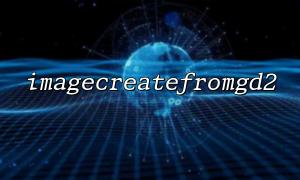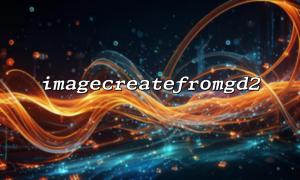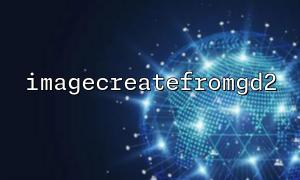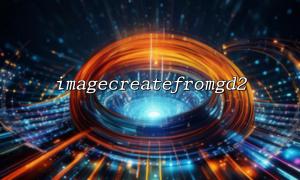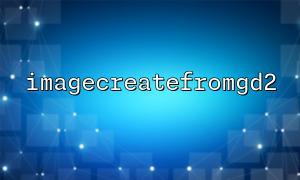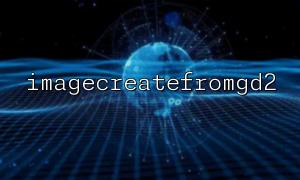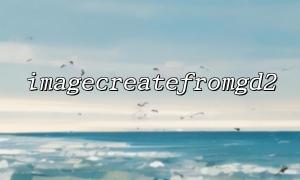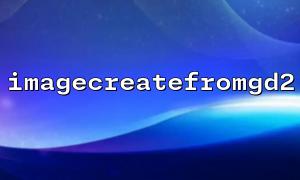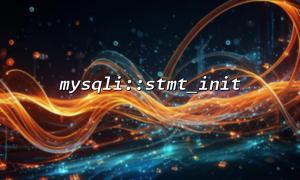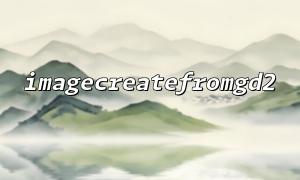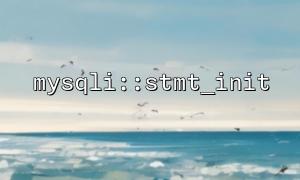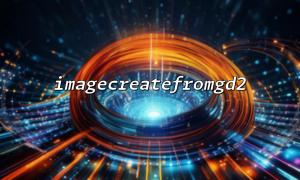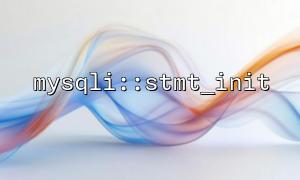When using PHP for image processing, the imagecreatefromgd2() function can be used to load images in GD2 format. However, this function can easily cause insufficient memory (such as "Allowed memory size exhausted" error) when dealing with large images or in memory-constrained environments. This article will explore some optimization strategies to reduce the memory usage of imagecreatefromgd2() at runtime and improve the stability of the program.
imagecreatefromgd2() will decode the entire image into a GdImage resource. In this process:
The image content will be fully loaded into memory ;
The GD library will create a complete pixel mapping table internally ;
For images with transparent channels, additional transparency information is required.
These factors superimpose, causing memory usage to soar rapidly when loading high-resolution images. For example, a true color image (24-bit color) of 3000x2000 pixels may require close to 20MB of memory.
Use ini_set() or manually set a larger memory cap at the top of the script (provided that the server allows):
ini_set('memory_limit', '256M');
?? Note: This is not an optimization method, it just avoids the program crashing directly. The real optimization is to reduce image volume or alternative loading methods.
Before using imagecreatefromgd2() , size the original image as much as possible. You can use other image tools (such as ImageMagick) to compress the large image to a reasonable size first, and then load it with GD.
Alternatively, use the PHP-provided image scaling tool to scale immediately after loading to reduce memory burden:
$srcImage = imagecreatefromgd2('https://m66.net/images/bigimage.gd2');
$dstWidth = imagesx($srcImage) / 2;
$dstHeight = imagesy($srcImage) / 2;
$dstImage = imagescale($srcImage, $dstWidth, $dstHeight);
imagedestroy($srcImage);
The GD2 file itself supports both compressed and non-compressed formats. If it is a non-compressed format, the data can be parsed in segments in theory, but PHP native imagecreatefromgd2() does not support streaming.
One workaround is to avoid using the GD2 format and switch to JPEG or PNG, because these two formats are more common, more maturely processed, and have better compression efficiency.
Avoid frequent calls to imagecreatefromgd2() , and you can cache the processing results as intermediate files, for example:
$cacheFile = '/tmp/cache_image.jpg';
if (!file_exists($cacheFile)) {
$srcImage = imagecreatefromgd2('https://m66.net/images/bigimage.gd2');
imagejpeg($srcImage, $cacheFile, 85); // Convert and compress to JPEG cache
imagedestroy($srcImage);
}
$img = imagecreatefromjpeg($cacheFile);
Doing so does not only reduce memory usage, but also improve loading speed.
GD2 is not a common image exchange format, but is mainly designed for internal use of the GD library. If you have the option, it is highly recommended to switch to PNG, JPEG, or WebP formats. They have:
Higher compression efficiency;
wider compatibility;
Better performance.
Example of converting GD2 to PNG:

